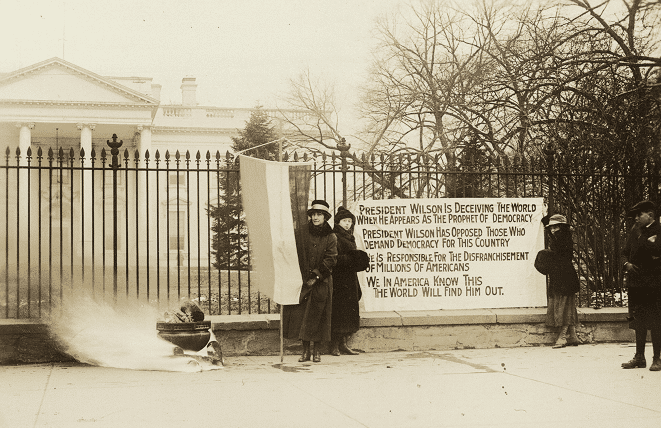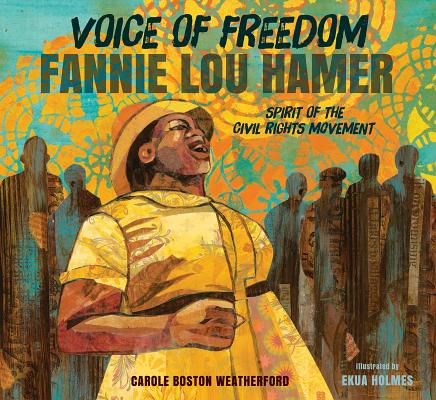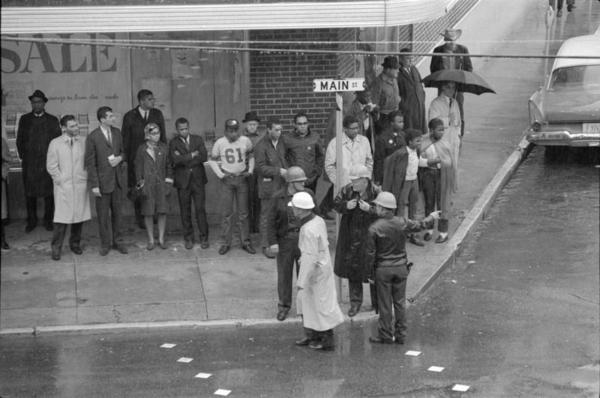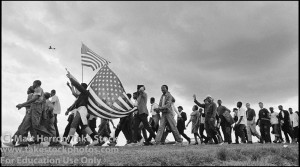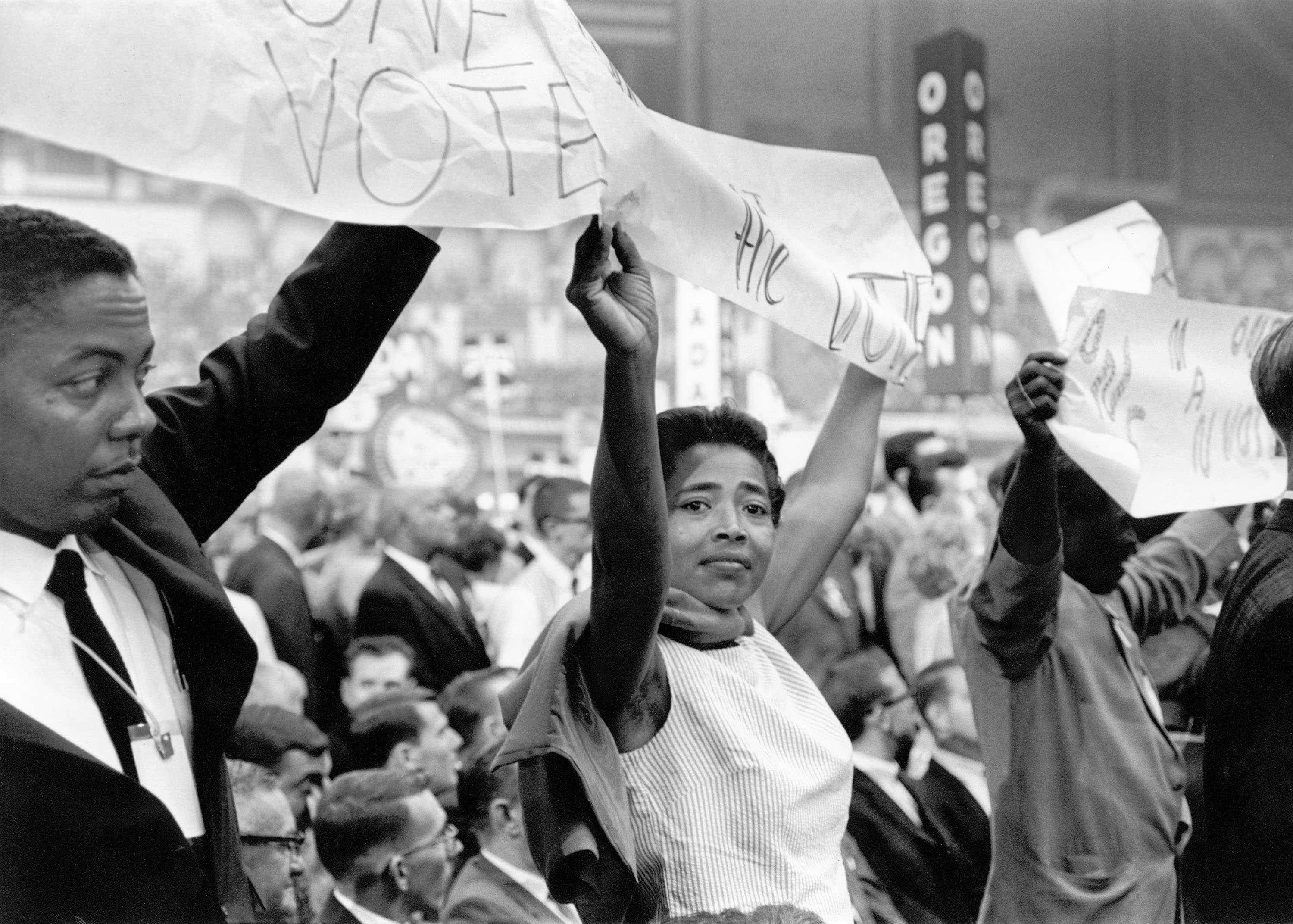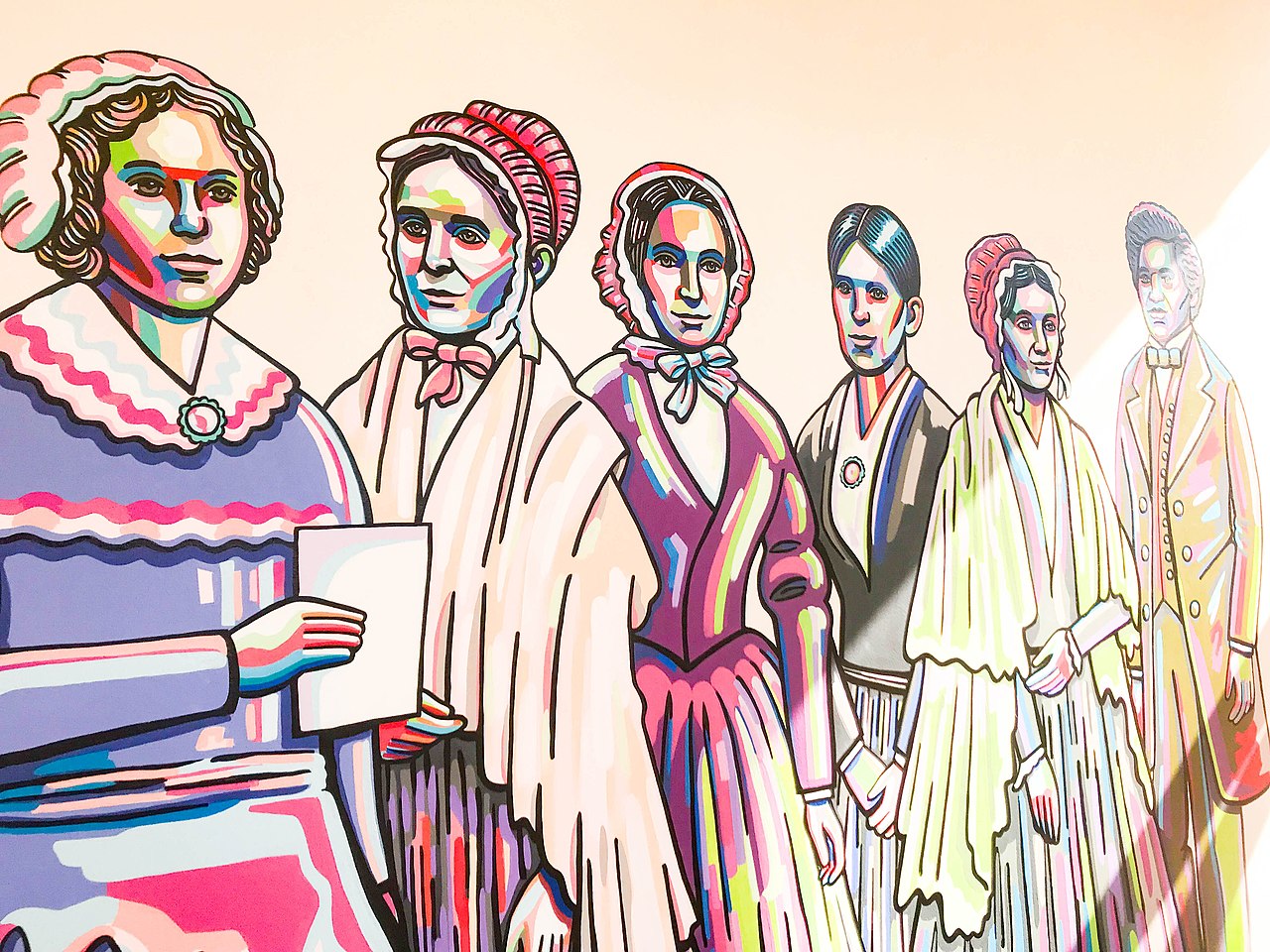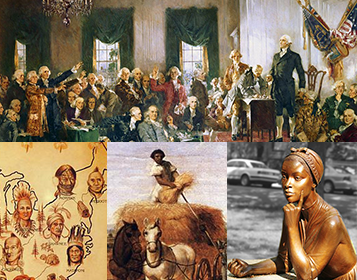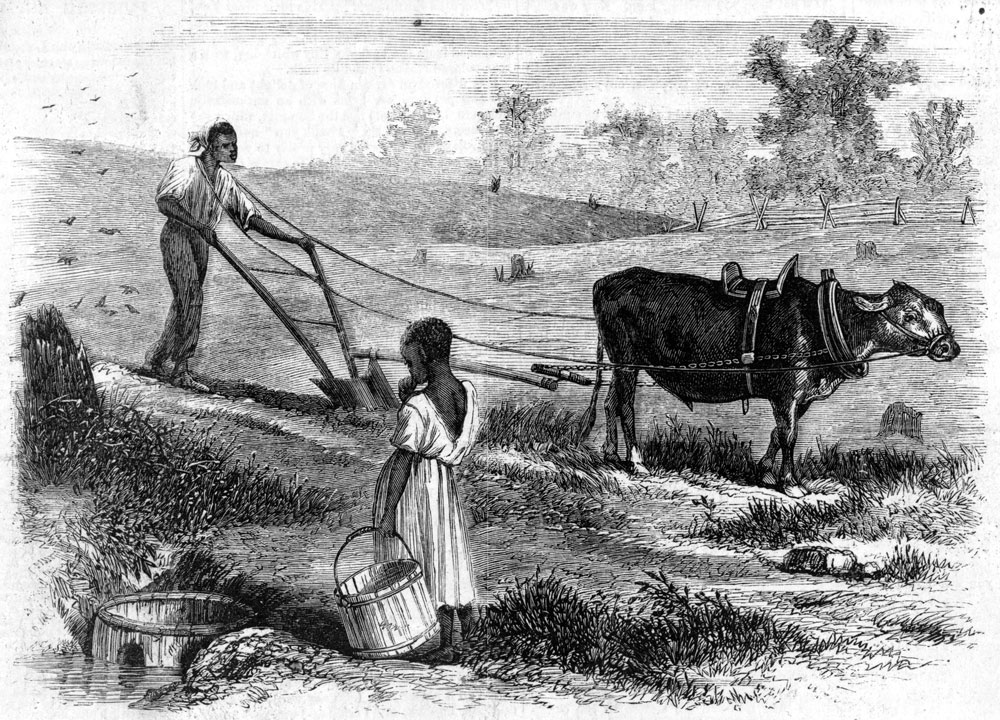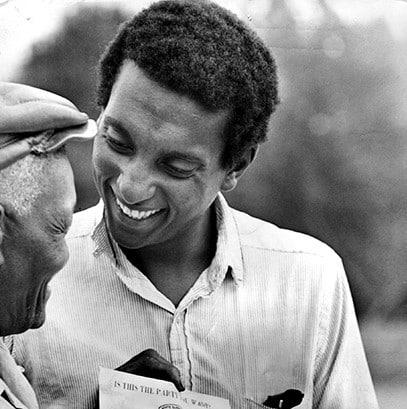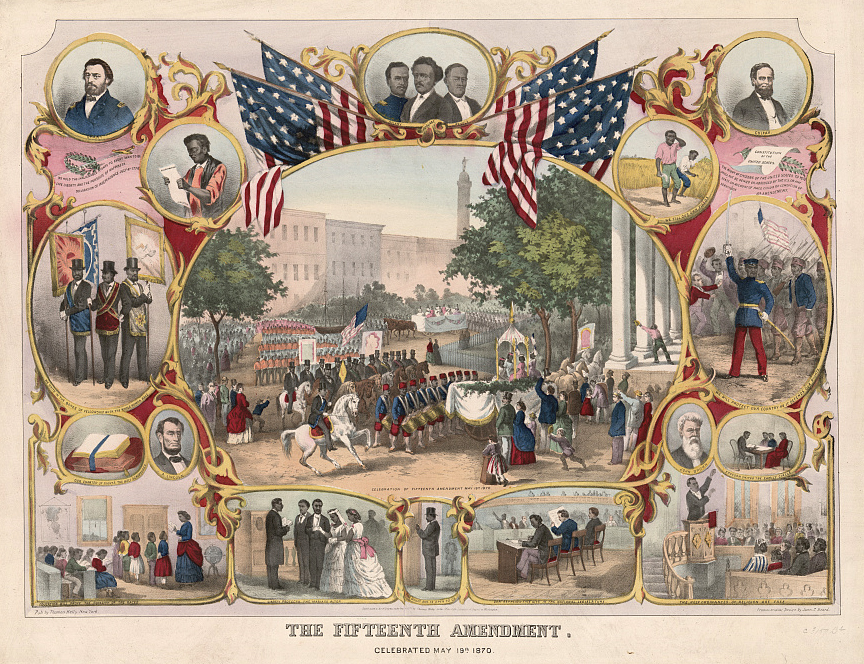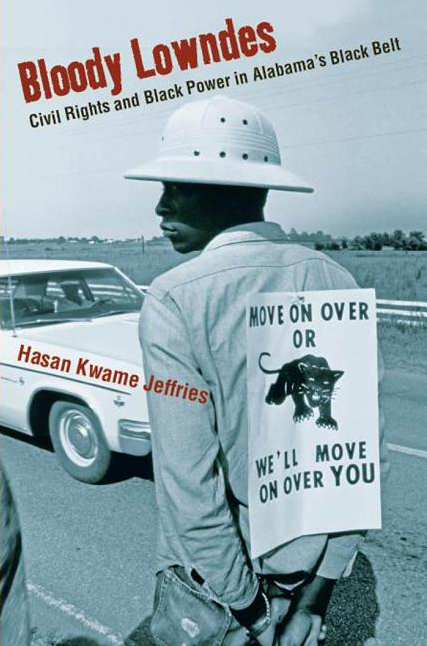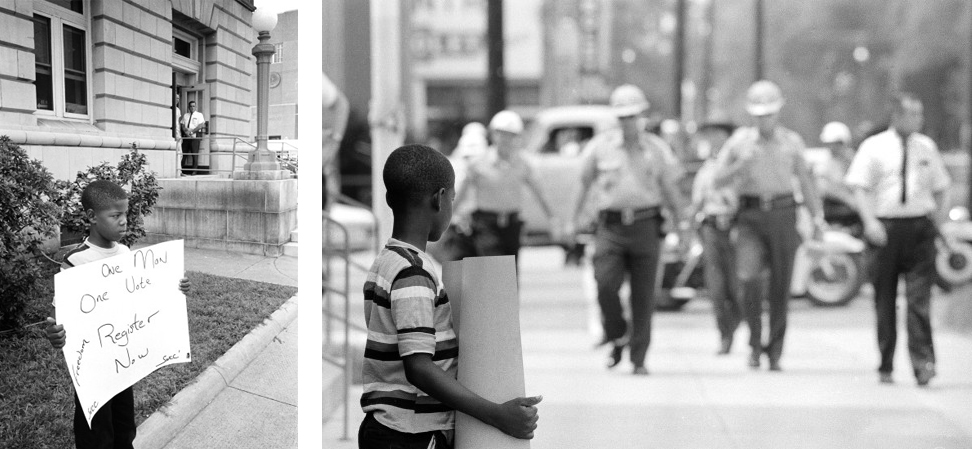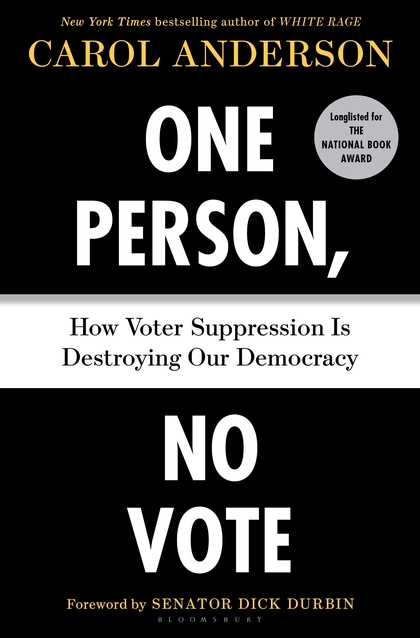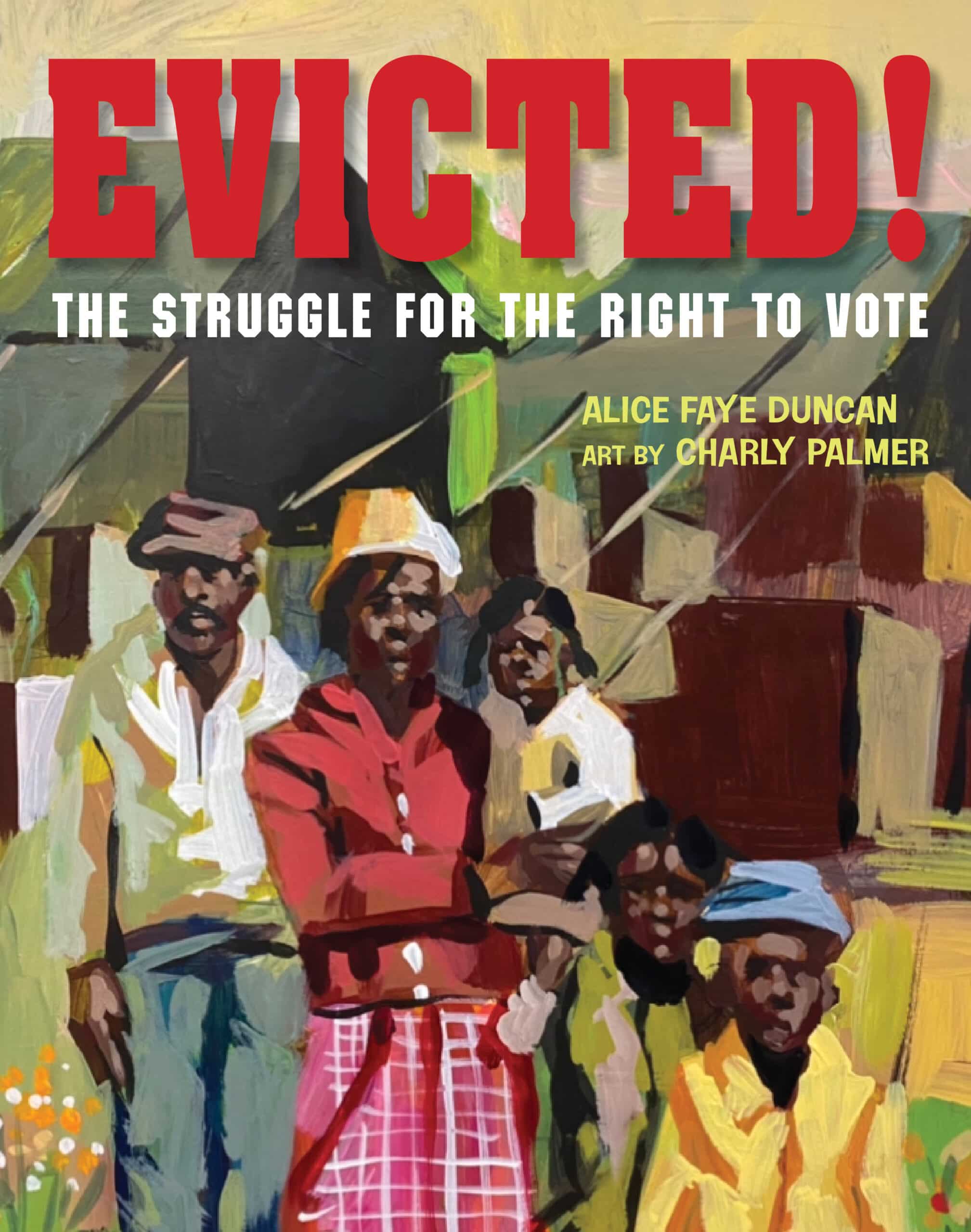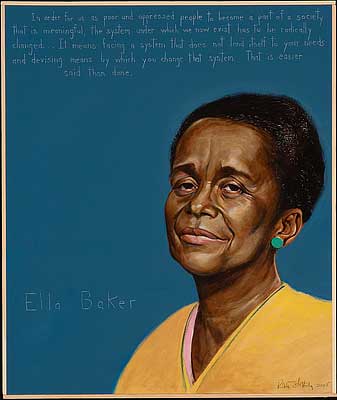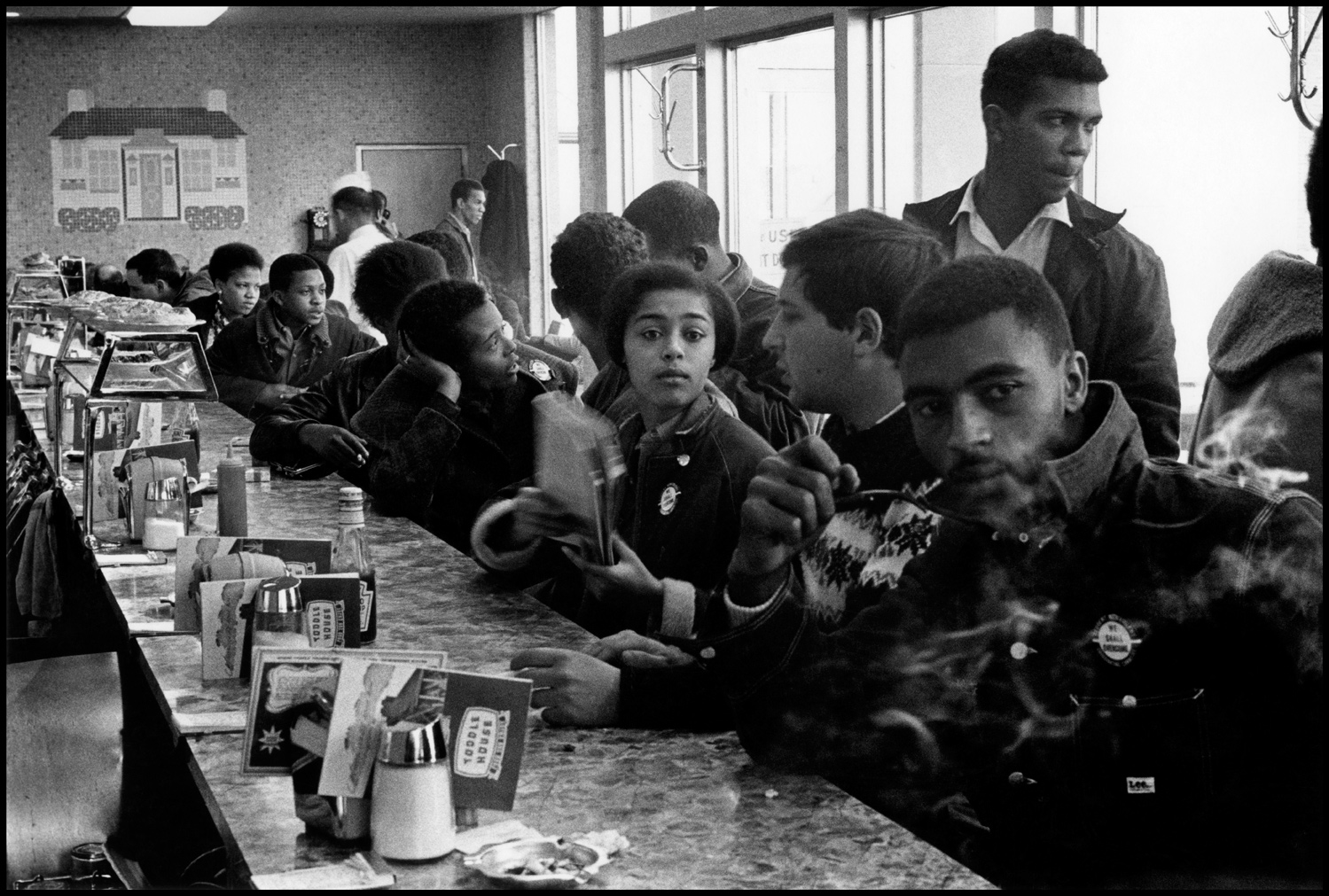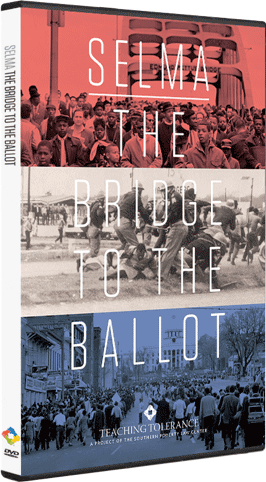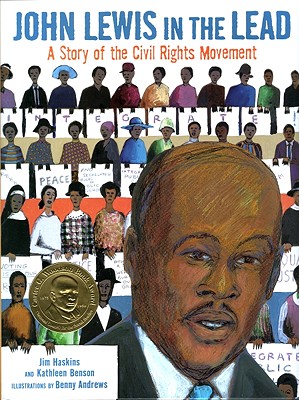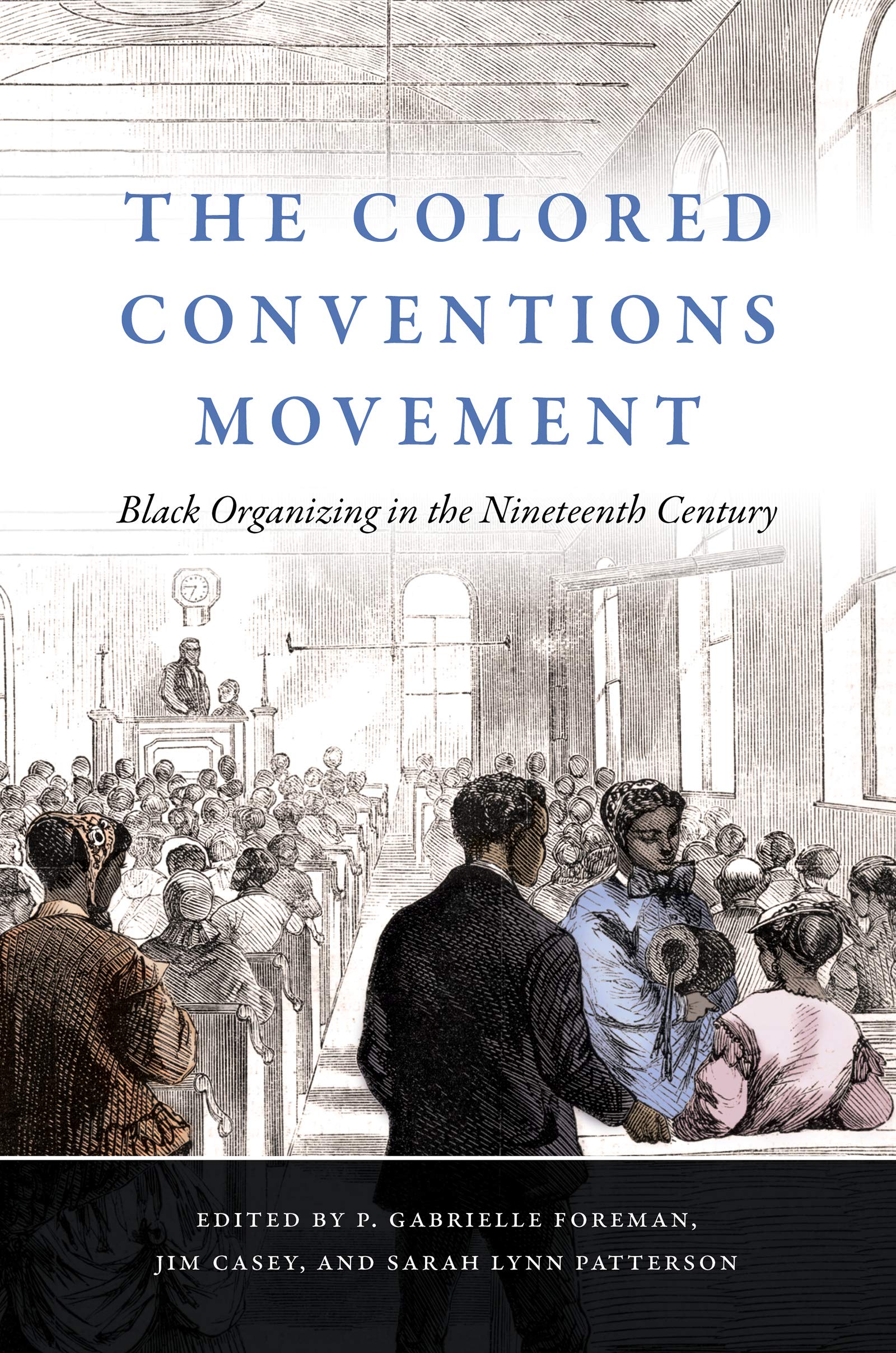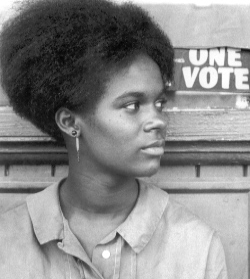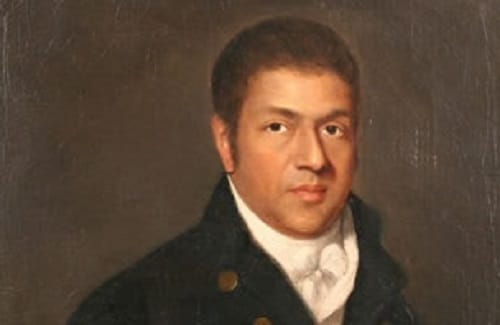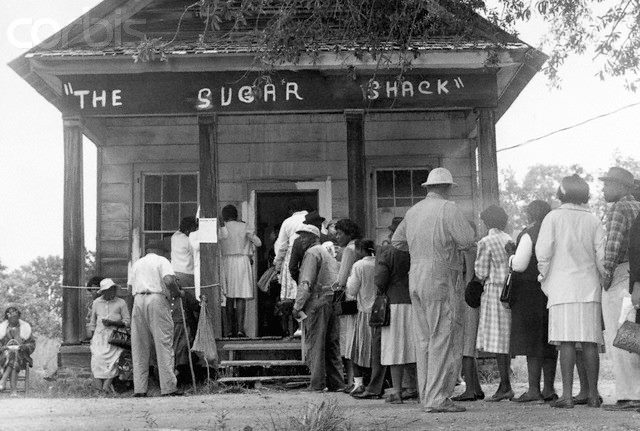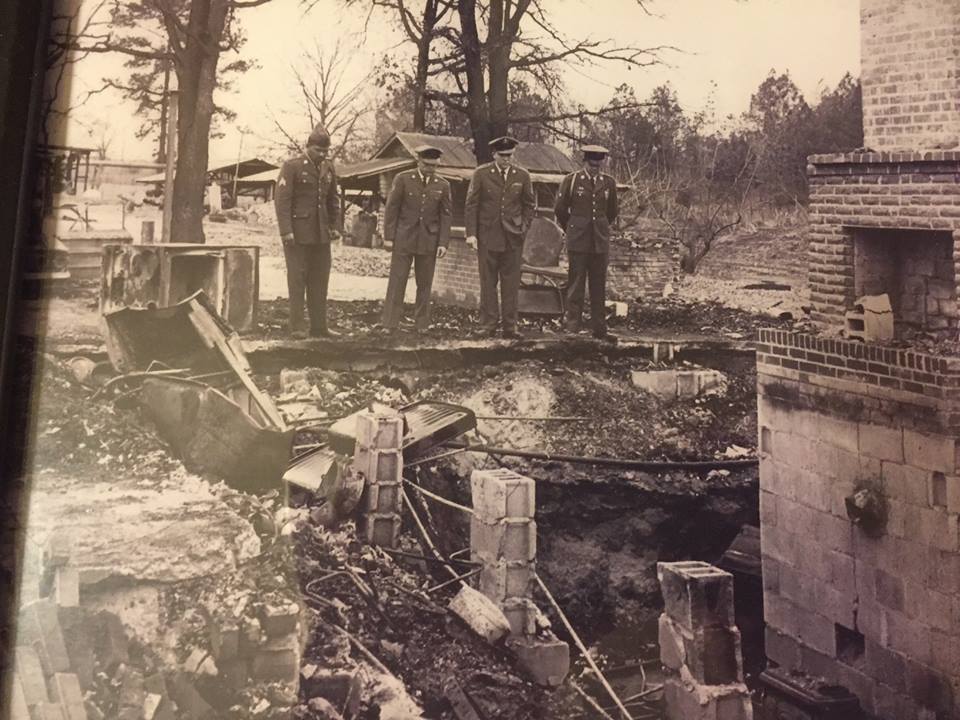In one of the more spectacular demonstrations for women's voting rights, the National Woman’s Party burned President Woodrow Wilson in effigy in front of the White House during the campaign for the 19th Amendment.
Continue reading
Picture book. By Carole Boston Weatherford. Illustrated by Ekua Holmes. 2015. 45 pages.
Illustrated biography of Fannie Lou Hamer, activist for voting and economic rights from Mississippi.
Continue reading
Article. By Howard Zinn. From Chapter 6 of You Can't Be Neutral on a Moving Train.
Zinn describes the Student Nonviolent Coordinating Committee (SNCC) voting rights campaign called Freedom Day in Hattiesburg, Miss.
Continue reading
Teaching Activity. Teaching for Change. 2015. 20 pages.
Introductory lesson on key people and events in the long history of the Selma freedom movement.
Continue reading
Teaching Activity. By Julian Hipkins III, Deborah Menkart, Sara Evers, and Jenice View.
Role play on the Mississippi Freedom Democratic Party (MFDP) that introduces students to a vital example of small “d” democracy in action. For grades 7+.
Continue reading
Teaching Activity. By Bill Bigelow. 17 pages.
A role play allows students to examine issues of race and class when exploring both the accomplishments and limitations of the Seneca Falls Convention.
Continue reading
Teaching Activity. By Bill Bigelow. 24 pages.
The U.S. Constitution endorsed slavery and favored the interests of the owning classes. What kind of Constitution would have resulted from founders who were representative of the entire country? That is the question addressed in this role play activity.
Continue reading
Lesson. By Bill Bigelow. 17 pages.
This role play engages students in thinking about what freedpeople needed in order to achieve — and sustain — real freedom following the Civil War. It's followed by a chapter from the book Freedom's Unfinished Revolution.
Continue reading
Article. By Emilye Crosby and Judy Richardson. 2015.
Key points in the history of the 1965 Voting Rights Act missing from most textbooks.
Continue reading
Article. By Hasan Kwame Jeffries.
History and significance of the Lowndes County Freedom Organization.
Continue reading
Teaching materials and guides on the 15th Amendment's significance in 2020 — its 150th anniversary and an election year.
Continue reading
Book — Non-fiction. By Hasan Kwame Jeffries. 2010. 372 pages.
History of the role that activists in Lowndes County played in spurring Black activists nationwide to fight for civil and human rights in new and more radical ways.
Continue reading
Article. By Howard Zinn. Excerpt from Chapter 5 of You Can't Be Neutral on a Moving Train.
Howard Zinn’s first-hand account of Selma’s Freedom Day in 1963.
Continue reading
Book — Non-fiction. By Carol Anderson. 2018. 368 pages.
This history of voter suppression highlights the aftermath and challenges to the 2013 Supreme Court ruling that gutted the Voting Rights Act of 1965.
Continue reading
Book — Non-fiction. By Lawrence Goldstone. 2020. 288 pages.
This young adult book documents the long and ongoing struggle for voting rights for African Americans.
Continue reading
Picture book. By Alice Faye Duncan and illustrated by Charly Palmer. 2022. 64 pages.
This critical civil rights book for middle-graders examines the little-known Tennessee's Fayette County Tent City Movement in the late 1950s and reveals what is possible when people unite and fight for the right to vote.
Continue reading
Profile.
Brief biography of Ella Josephine Baker, 1903–1986, activist and civil rights organizer.
Continue reading
Profile.
Brief biography of Judy Richardson, Student Nonviolent Coordinating Committee (SNCC) veteran, author, and filmmaker.
Continue reading
Film. Produced by Bill Brummel. Learning for Justice. 2015. 40 minutes.
Documentary about the students and teachers of Selma, Alabama who fought for voting rights.
Continue reading
Picture book. By Jim Haskins and Kathleen Benson. Illustrated by Benny Andrews. 2006. 32 pages.
The life of Civil Rights Movement activist and Congressman John Lewis.
Continue reading
Book — Non-fiction. Edited by Gabrielle Foreman, Jim Casey, and Sarah Patterson. Introduction by P. Gabrielle Foreman. 2021.
This volume of essays is the first to focus on the Colored Conventions movement, the nineteenth century’s longest campaign for Black civil rights.
Continue reading
Profile.
Summer initiative to register African American voters in Mississippi.
Continue reading
Paul Cuffee and other free Blacks petitioned the Massachusetts government to give African and Native Americans the right to vote.
Continue reading
Vernon Dahmer was killed when the Ku Klux Klan fired bombed his home. This was one day after Dahmer offered to pay the election poll tax for anyone who could not afford it.
Continue reading

